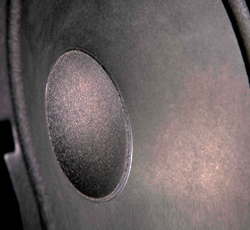These days, concert loudspeaker systems can sound very good over most of the frequency range. Things have improved a lot in recent years. But to my ears, bass sound hasn’t made nearly as much progress.
How often have do you go to a show, particularly a fairly loud one, and feel that you’re listening to a war between the upper and lower halves of the spectrum? It all sounds pretty good at low levels, but when things get cooking, up comes the roar from below.
To preserve some semblance of transparency, the poor sound person has no choice but to produce an offsetting screech from the high mid, and the fight is on. The music (remember the music?) is lost somewhere in the middle.
At the end of the show, you might hear excuses: the room acoustics were bad, or the band was too loud on stage, or there wasn’t enough PA, or who knows what else.
Although there are lots of bad rooms and other issues out there, I think that a lot of the problem simply comes from bad bass in the sound system. In what follows, I’ll describe what makes bad bass, and how not to have it.
Harmonics
One of the first people to think hard about bass was a man named Edgar Villchur. He founded the famous home hi-fi loudspeaker company Acoustic Research (AR) in 1954.
AR built the world’s first compact low-distortion woofer, the AR-1, which had a clean, tight, musical bass sound, in contrast to the big boom boxes that were popular at the time. About the sound, Villchur said something that’s still the biggest single key to good concert bass: “What most people think of as boominess in the midbass is really the sound of distortion harmonics from the bass speakers operating a couple of octaves below.”
Back in 1991, I was developing a new woofer for Jasonaudio’s predecessor, Jason Sound of Vancouver. The new woofer replaced an earlier model that had the same output level and same frequency response.
The only difference, other than a more convenient box shape, was that the new box had about 6 dB less distortion than the old box. The old box had about 4 percent distortion at high power, while the new one had about 1 percent. When we compared the two models, the main difference we noticed wasn’t in the bass. The bass was about the same.
But with the new box, the entire sound of the PA below 1 kHz was cleaned up. The midbass and lower midrange were more transparent and less confused-sounding, and the sense of separation between bass and midrange frequencies was greatly increased.
Why? Because the new woofers were not spraying ugly harmonics across the whole lower half of the musical spectrum.















